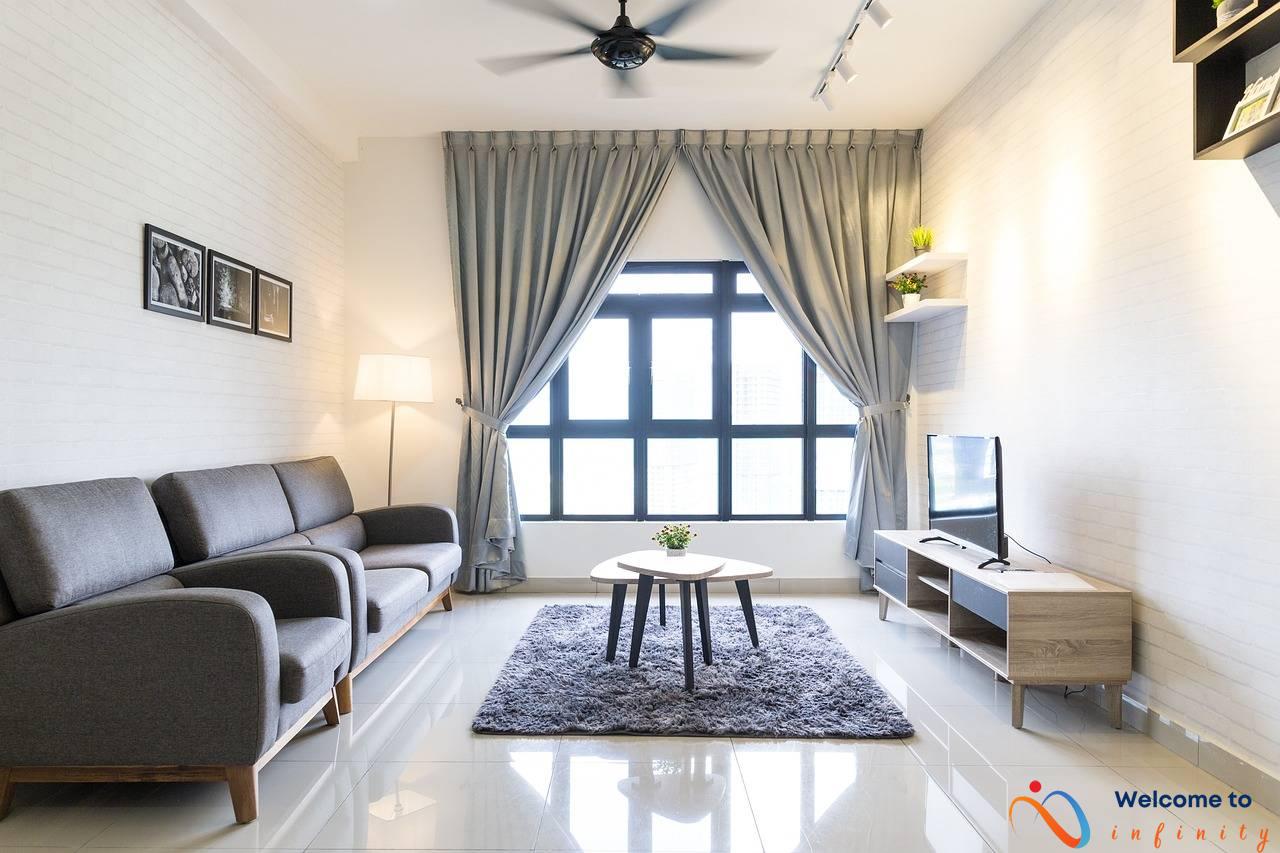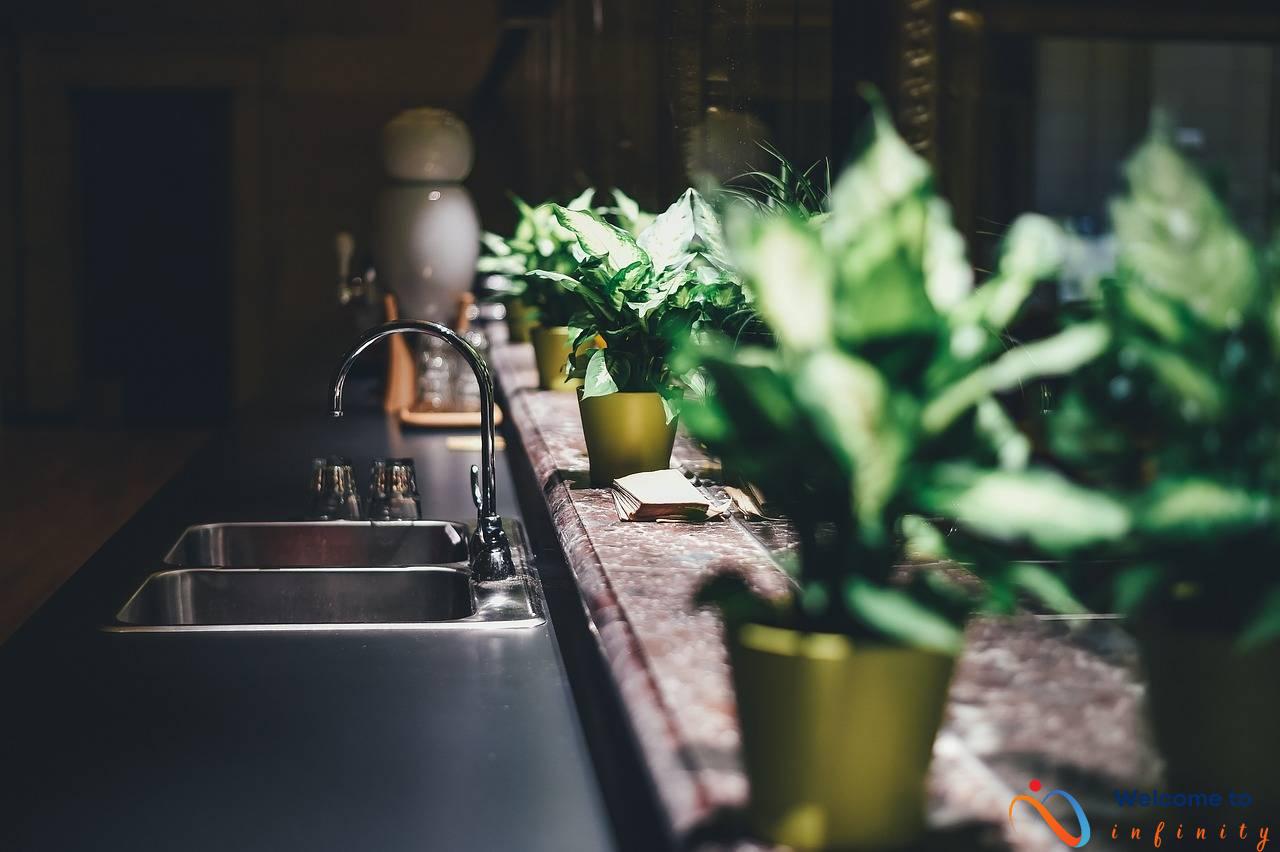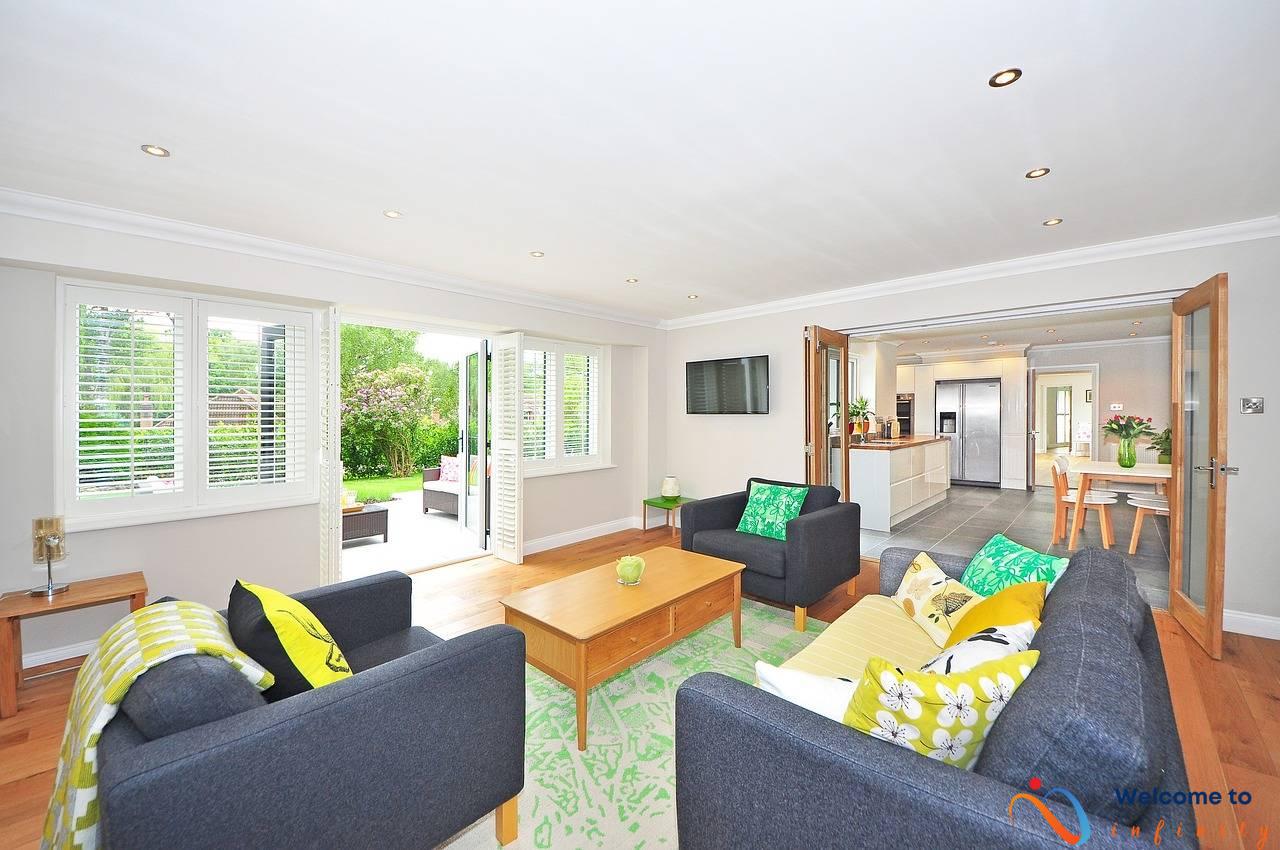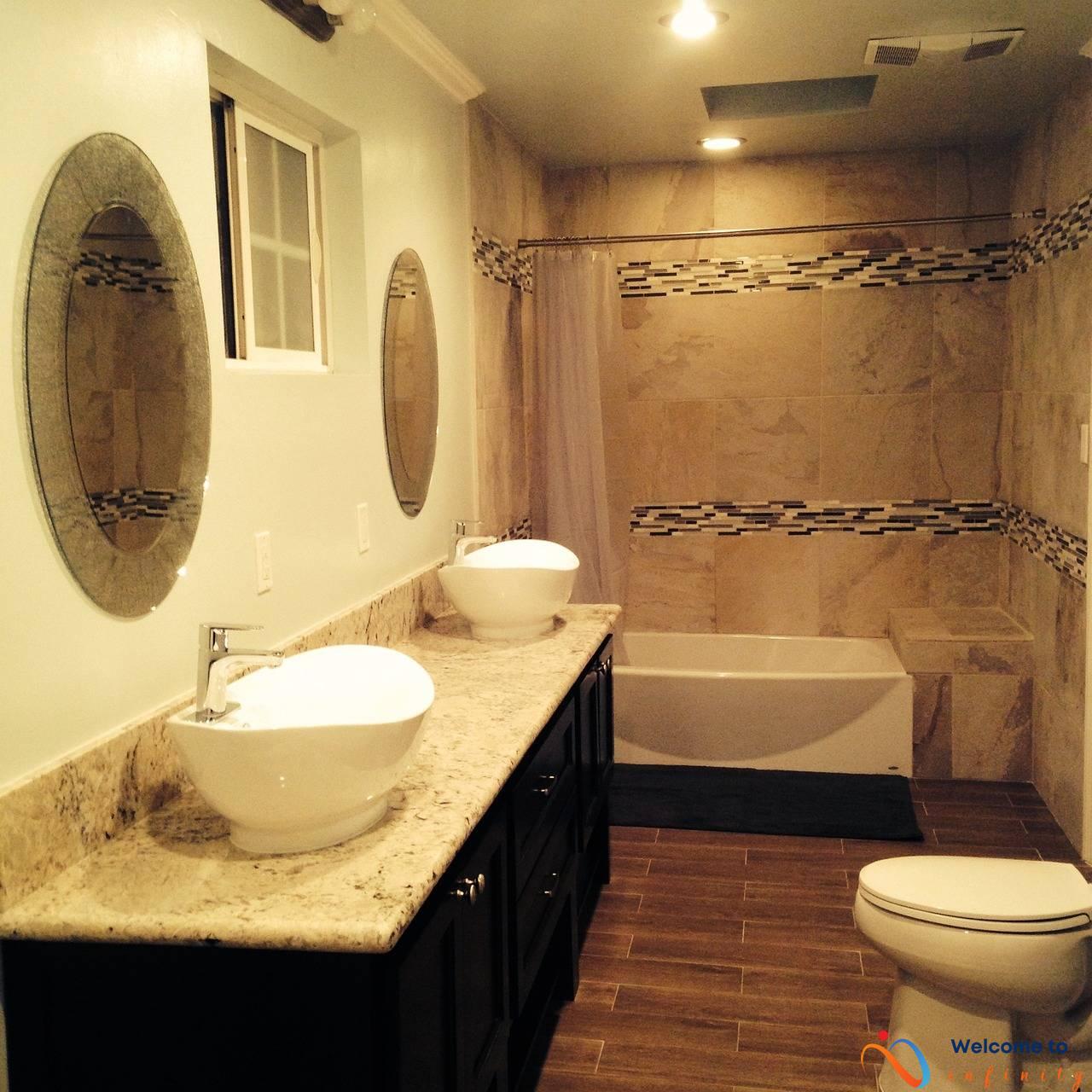If you live in a small space, you know that maximizing your living area is essential. One of the most effective ways to make the most of your limited space is through minimalist interior design. Minimalism emphasizes simplicity, functionality, and the strategic use of space, making it ideal for small living spaces. By incorporating minimalist design principles into your decor, you can create a sleek, stylish, and functional living space.
Minimalism can provide many benefits for small space living. One of the most significant advantages is reducing clutter. A minimalist approach focuses on only the essential items, getting rid of the unnecessary and excess possessions. This reduction in clutter not only helps to make the space look larger, but it also provides a calming atmosphere, which is perfect for small living spaces where relaxation is essential. Beyond reducing clutter, minimalism can also increase functionality. With careful consideration, every space can be embedded with purpose, allowing for efficient use of the living space.
To create the illusion of space, color and lighting are two crucial factors. One technique to achieve this illusion is through the use of a neutral color palette. Neutral tones, such as white, beige or grey, reflect light, making the space brighter and feel larger. When it comes to lighting, strategic lighting techniques can enhance the minimalist aesthetic and make space feel larger. Avoid cluttering mini accessories or floor lamps and opt for a centric lighting system or pendant lights that blend with the neutral tones of the wall.
The minimalist approach can also maximize the functionality of your furniture with multi-functional pieces. Foldable and stackable pieces, such as tables, chairs, and storage units, are efficient in maintaining a sleek look while providing the flexibility to transform the room as needed. Hidden storage solutions are also useful additions to minimalist spaces to reduce clutter. Creative hidden storage solutions, such as ottomans with storage, floating shelves, and wall-mounted shelves, are perfect for hiding away possessions while providing additional functionality.
Benefits of Minimalism
If you're living in a small space, embracing minimalism can offer a variety of benefits. One of the key advantages is reducing clutter, which can help create a more serene and calming environment. When you have less stuff, you can focus on the things that truly matter and let go of distractions that can detract from your overall well-being.
Another advantage of minimalism is increasing functionality. By carefully curating the items in your home, you can make each piece work harder for you. For example, instead of having a separate desk and dining table, you could invest in a multi-functional piece that serves both purposes. This not only saves space but also makes your small living area more versatile and adaptable to your needs.
Minimalism can also lead to cost savings over time. When you're not buying unnecessary items, you can allocate your resources more thoughtfully and intentionally. In addition, by investing in high-quality, long-lasting items, you can avoid replacing cheaper, disposable pieces as frequently.
In summary, embracing minimalism in a small living space can provide a range of benefits, including reducing clutter, increasing functionality, and saving on costs. By simplifying your surroundings and focusing on the essentials, you can create a more peaceful and purposeful environment.
Color and Lighting Techniques
Minimalist interior design relies heavily on color and lighting techniques to create the illusion of space and enhance the minimalist aesthetic. One of the main benefits of using color in a minimalist design scheme is its ability to make a small space feel larger. One effective technique is to use a neutral color palette on the walls and floors. Monochromatic color schemes can also work well, using varying shades of a single color to create depth and interest.
Lighting is also key to creating a spacious and airy feel in a small living space. Strategically placed lighting, such as angled spotlights or sconces, can help emphasize architectural features and draw the eye upward, creating the illusion of height. Under-cabinet task lighting is another great way to add depth and dimensionality to a small room.
Table lamps are a great option for adding warmth and ambiance to a minimalist space. Choose lamps with soft, diffuse lighting that create a cozy and inviting atmosphere. When choosing light fixtures for your minimalist interior, keep in mind that less is often more. Stick to a few well-placed statement pieces rather than cluttering the space with too many light sources.
In addition to using color and lighting to enhance your minimalist interior, consider incorporating natural materials and textures for added warmth and depth. Woven wall hangings, leather accents, and natural wood finishes create a welcoming and comfortable atmosphere in any small living space. Overall, by utilizing color and lighting strategically, you can create a minimalist interior that feels spacious, serene, and inviting.
Neutral Color Palette
Are you struggling to make your small living space feel spacious and peaceful? Implementing a neutral color palette can work wonders in creating an illusion of space and a calming atmosphere.
Neutral colors such as beige, cream, gray, and white reflect light and make a room appear brighter and more spacious. By using a consistent color palette throughout your space, you can create a cohesive and harmonious aesthetic, making the room feel less cluttered.
When it comes to furniture and decor, opt for pieces in neutral colors that blend with the walls and floors. This will prevent the space from feeling too busy and overwhelming.
You don't have to stick to just one shade either. Experiment with different shades and textures of the same neutral color to add depth and interest to your space. Consider using accent pieces, like pillows and throws, to incorporate pops of color without disrupting the cohesive neutral theme.
Overall, a neutral color palette is a great way to make your small living space feel larger and more peaceful. By creating a cohesive and calming aesthetic, you can reduce clutter and create a more functional and enjoyable space.
Strategic Lighting
If you thought lighting is only for illumination, think again! Lighting can not only brighten up your space but also enhance it aesthetically. When it comes to minimalist interior design, lighting plays a crucial role in creating a spacious illusion. By using strategic lighting techniques, you can create an illusion of space even in the smallest of rooms.
The first and most important thing to keep in mind is to avoid over-lighting. Instead, use multiple sources of soft lighting to create a warm and welcoming atmosphere. An excellent way to add a stylish touch to your space is by incorporating pendant lights, chandeliers, and wall sconces. These will not only provide ample lighting but also create an elegant ambiance. Another great way to enhance the minimalist aesthetic is by installing dimmer switches to alter the intensity of light according to your mood.
Add depth to your space by using ambient lighting. The best way to achieve this is by creating a layered lighting effect. Use light sources at multiple levels, such as wall sconces, table lamps, and floor lamps. This will not only illuminate the room but also create an illusion of depth. Additionally, using white or light-colored lampshades can reflect light, making the space appear more substantial.
Accent lighting is another technique that can enhance the minimalist aesthetic. By emphasizing a specific area or design element, you can create a focal point in the room. Use directional spotlights to highlight artwork, a sculpture, or a statement piece of furniture. This lighting technique provides depth and dimension to your space.
Lastly, natural lighting can work wonders in creating an illusion of space. Allow natural light to flood through your windows and bounce off light-colored walls to create a bright and airy atmosphere. However, if your space lacks natural light, you can use sheer curtains to let in more sunlight or use daylight bulbs to mimic natural light.
Multi-Functional Furniture
If you want to maximize your living space without sacrificing style, multi-functional furniture is the way to go. With this type of furniture, you can get more bang for your buck as it performs multiple functions. Let's look at some of the ways that multifunctional furniture can help you get the most out of your small space:
Foldable and stackable furniture is a great way to save space while still maintaining an aesthetically pleasing interior. These types of furniture are easily collapsible and can be stacked away when not needed. For example, a foldable dining table can be used to save space in a small apartment and can be easily stored away when not in use. Similarly, stackable chairs can be used to save space when you don't have guests over. This kind of furniture is perfect for individuals who love hosting but don't have a lot of space.
Another way to maximize space in your home is to use furniture with built-in storage compartments. Hidden storage solutions can help to reduce clutter and keep your living space neat and tidy. For instance, a bed with built-in storage can provide ample space for storing clothes, linens, and other accessories. There are also ottomans, coffee tables, and benches with built-in storage compartments, which are perfect for storing additional items. This type of furniture not only saves space but also keeps your home looking stylish and clutter-free.
Investing in multi-functional furniture is a great way to maximize your small living space. From foldable and stackable options to hidden storage solutions, multi-functional furniture allows you to stay organized while enjoying a sleek and stylish space.
Foldable and Stackable Furniture
If you're looking for ways to maximize your living space, foldable and stackable furniture can be a game changer. These pieces of furniture are designed with the needs of small living spaces in mind. Here are some benefits of choosing these space-saving options:
- Flexibility: Foldable and stackable furniture can be easily moved around, making it convenient for changing needs and different activities.
- More Space: When not in use, these pieces can be effortlessly stored away, reducing clutter and making room for other activities.
- Sleek Design: These types of furniture are often designed with a minimalist look that fits perfectly in any space, without compromising style.
When shopping for foldable and stackable furniture, there are several options you can consider:
| Types | Benefits |
|---|---|
| Folding Chairs | Provide extra seating while taking up minimal space when not in use. |
| Folding Tables | Perfect for small dining areas or as makeshift workspaces that can be easily stored away after use. |
| Stackable Shelving Units | Maximize your storage potential by stacking them on top of each other and taking full advantage of vertical space. |
Investing in foldable and stackable furniture can make a big difference in how you use and enjoy your living space. With their flexibility, style, and space-saving features, you can create a functional, stylish, and clutter-free home, regardless of its size.
Hidden Storage Solutions
One of the biggest challenges in small space living is finding a place to store all of your belongings without creating clutter. Fortunately, there are a variety of clever storage solutions that can be incorporated into your furniture and decor to keep your space looking clean and minimalist.
One way to maximize space is to utilize multi-purpose furniture with built-in storage, such as a bed with drawers underneath or a coffee table with a lift-up top. For smaller items, consider using decorative boxes or baskets that can be tucked away under tables or shelves.
Another option is to utilize vertical space by hanging shelves or hooks on walls to store items like books or clothing. Additionally, installing floating shelves or cabinets can create the illusion of more floor space while still providing ample storage.
If you have a larger budget and want to invest in long-term storage solutions, built-in shelves or cabinets can provide a clean and seamless look while maximizing storage space. In the kitchen, pull-out pantry cabinets or secret drawers can be integrated into the design to keep appliances and pantry items hidden from view.
Overall, incorporating hidden storage solutions into your minimalist interior design can greatly enhance the functionality of your living space and create a clutter-free environment. With a little creativity and strategic planning, even the smallest of spaces can feel spacious and organized.
Space Optimization Tips
If you're looking to optimize your living space, there are several practical tips that can help you make the most of your limited square footage. One key strategy is to maximize your vertical space. This can be achieved by installing high shelves or tall storage units that extend all the way up to the ceiling. Not only does this create additional storage space, but it also draws the eye upward, making the room appear larger and more open.
Another effective way to optimize your living space is to create designated zones for specific activities. For example, you might create a workspace in a corner of the room with a desk and chair, or designate a cozy reading nook with a comfortable armchair and floor lamp. This can help you make the most of your space by ensuring that each area is being used to its fullest potential.
In addition, consider investing in furniture that can serve multiple functions. For example, a sofa bed can provide seating during the day and convert into a bed at night, while a coffee table with built-in storage can provide a space to store books and magazines while also serving as a surface for drinks and snacks.
Finally, don't overlook the importance of organization and storage. Keep your space tidy by investing in smart storage solutions, such as under-bed storage boxes or hanging organizers. Consider donating or selling items you no longer need to reduce clutter and make more space for the items you truly love and use regularly.
- Maximize vertical space with tall shelves or storage units
- Create designated zones for specific activities
- Invest in multi-functional furniture
- Organize and store items smartly to reduce clutter
Vertical Space Utilization
Are you looking for ways to maximize your small living space? Utilizing vertical space is one of the most effective ways to increase storage and create a more functional living space.
One of the simplest ways to make use of vertical space is to install shelves on your walls. This allows you to store items while keeping them easily accessible. You can also create a statement wall by arranging decorative items, such as plants, books, and picture frames, on your shelves.
Another way to make use of vertical space is to invest in tall furniture, such as bookcases and wardrobes. These pieces of furniture have a small footprint, meaning they take up minimal floor space while providing ample storage. Additionally, you can use the top of tall furniture to store items you don't access frequently.
If you're feeling creative, you can also install a pegboard or a hanging organizer on your wall. This allows you to hang items such as pots, pans, and kitchen utensils, while freeing up your cabinet and drawer space.
In addition to these ideas, you can also consider using a loft bed to create more living space. A loft bed maximizes your floor space while providing a comfortable sleeping area. Underneath the bed, you can create a cozy seating area or a workspace, depending on your needs.
In conclusion, utilizing vertical space is one of the best ways to make the most of your small living space. From installing shelves and tall furniture to using a loft bed, there are plenty of ways you can increase storage and create a more functional living space.
Zoning Strategies
Zoning strategies can be a great way to maximize your living space and create a more functional and organized home. By partitioning your space into designated areas for different activities, such as work, relaxation, and eating, you can create a sense of order and purpose in your small living area.
One popular zoning strategy is to use furniture to divide your space. For example, placing a bookshelf or room divider between your living area and work area can create a clear boundary between the two spaces. You can also segment your space with rugs, curtains or even wallpaper to create designated zones.
When zoning your space, consider both the function of each area and the flow of your home. For example, you may want to place your work area near a window for natural light or create a relaxation area away from any noisy appliances. Keeping the different zones separate can also help reduce clutter and create a more visually appealing space.
- Consider using furniture that can serve multiple functions, such as a table that can be used for dining and working or a sofa bed for guests.
- Use lighting to highlight each zone and create a different atmosphere for each space. For example, brighter lighting in the work area and softer lighting in the relaxation area.
- Think creatively and vertically to conserve space. You can install shelves or storage units above or around your designated areas to increase storage and organization.
By using zoning strategies to partition your living space, you can create a more organized, functional and aesthetically pleasing home, even in small spaces.












